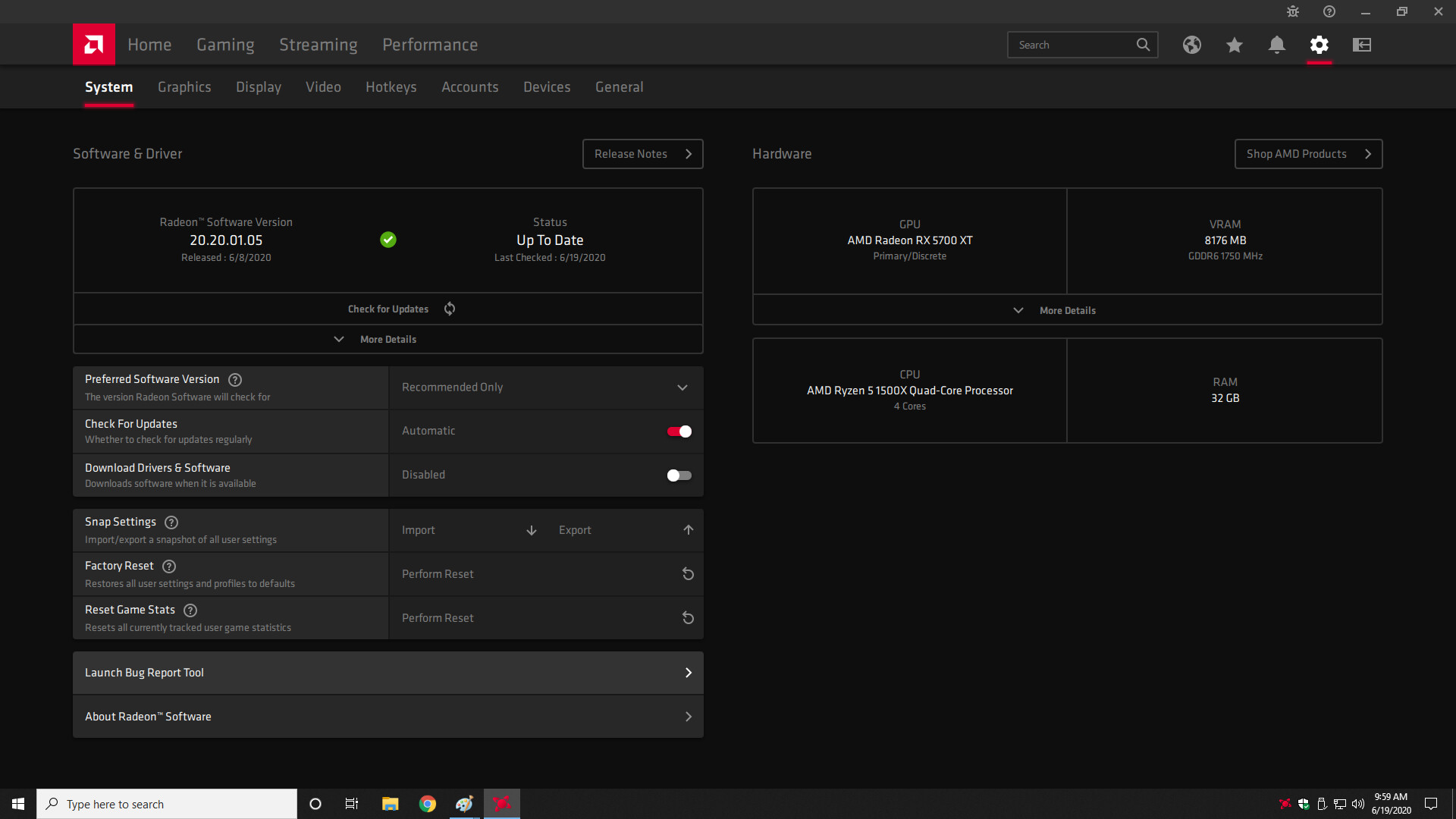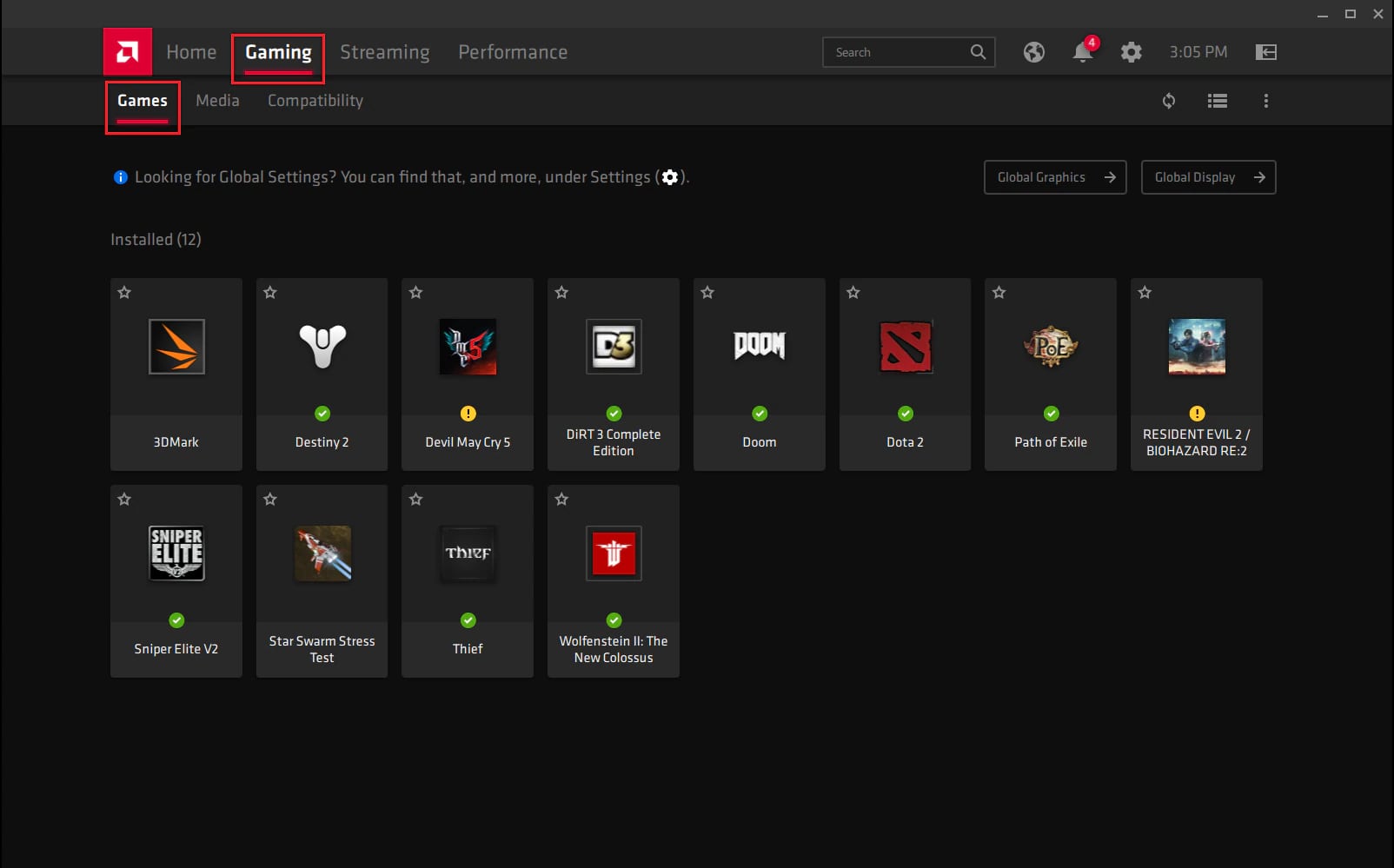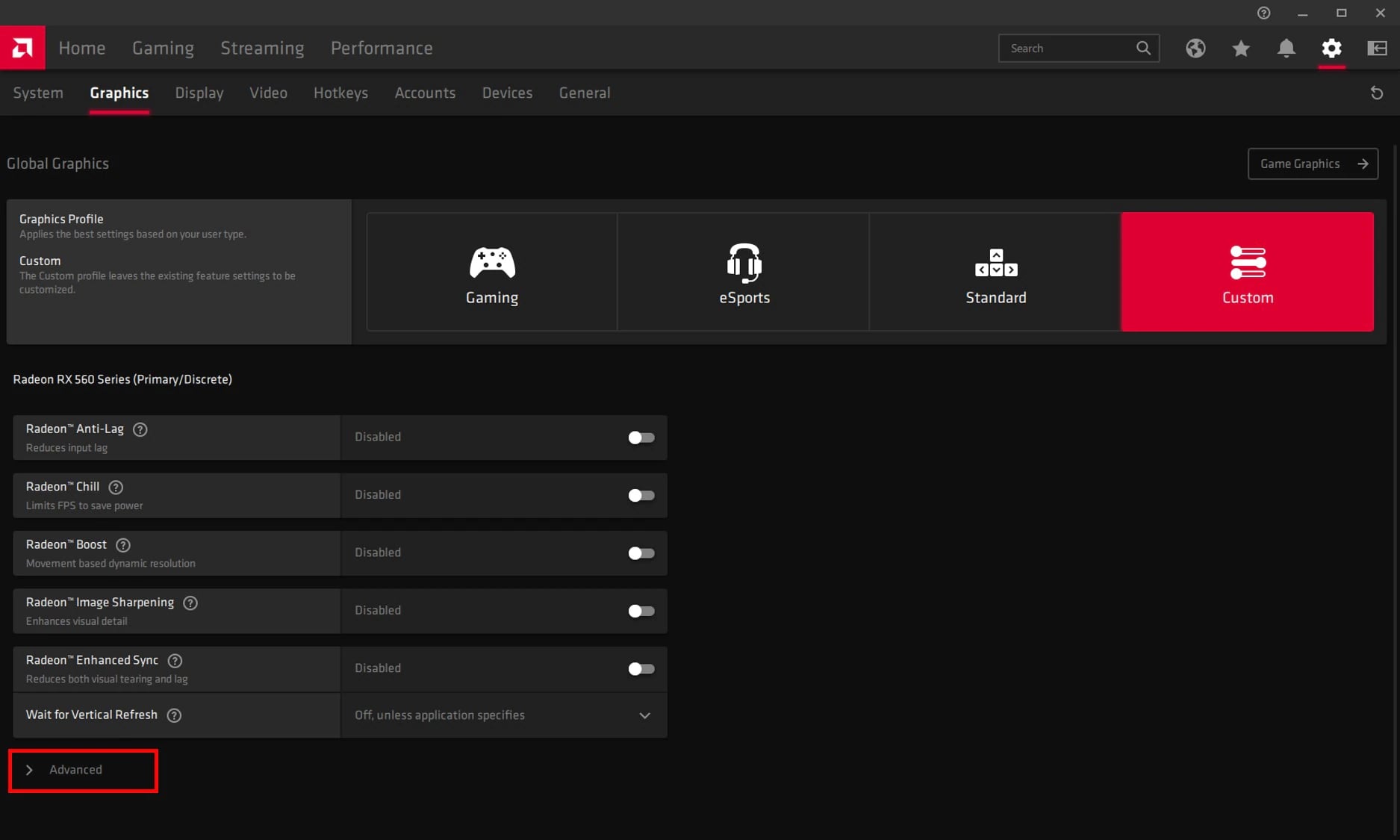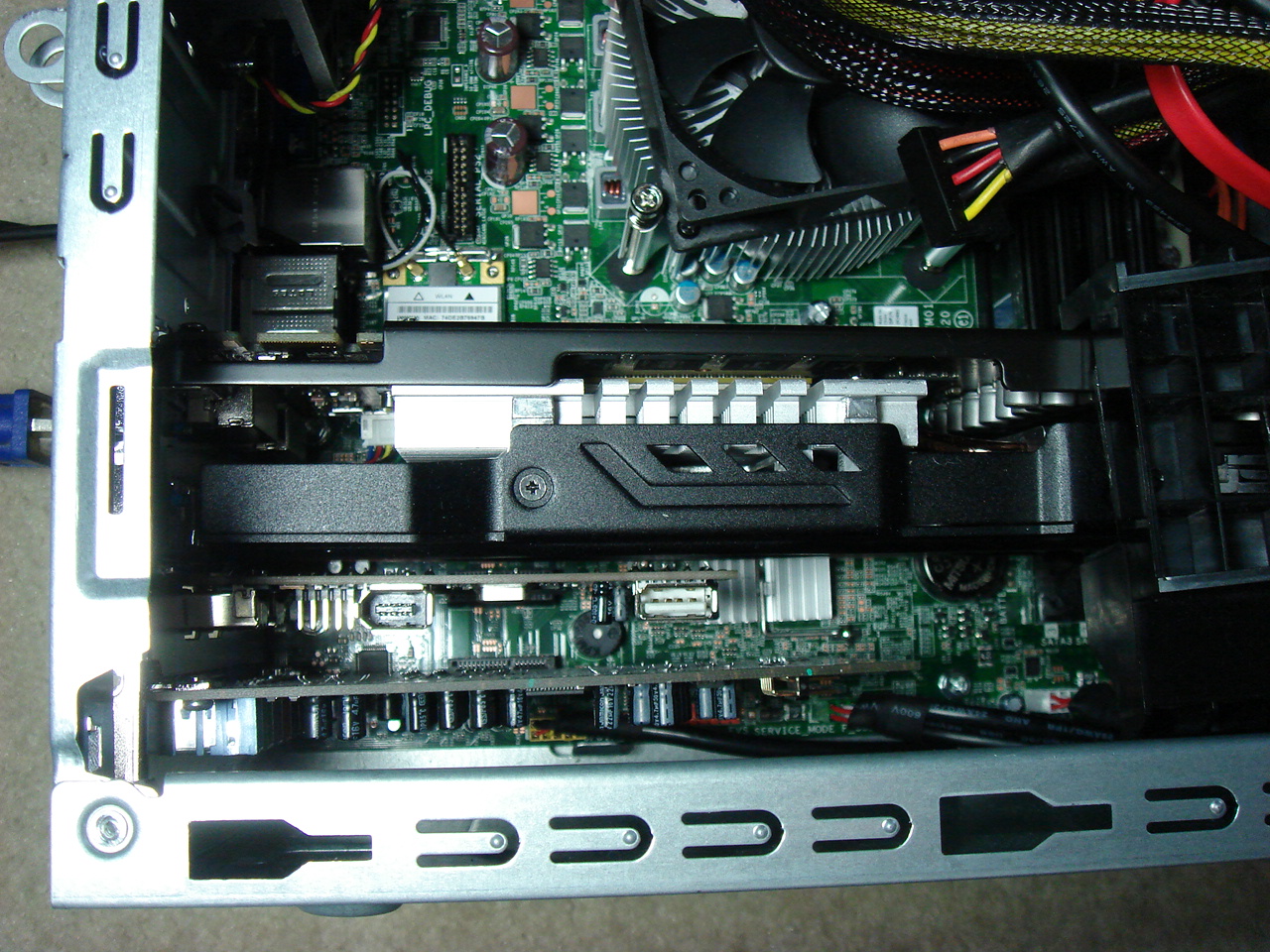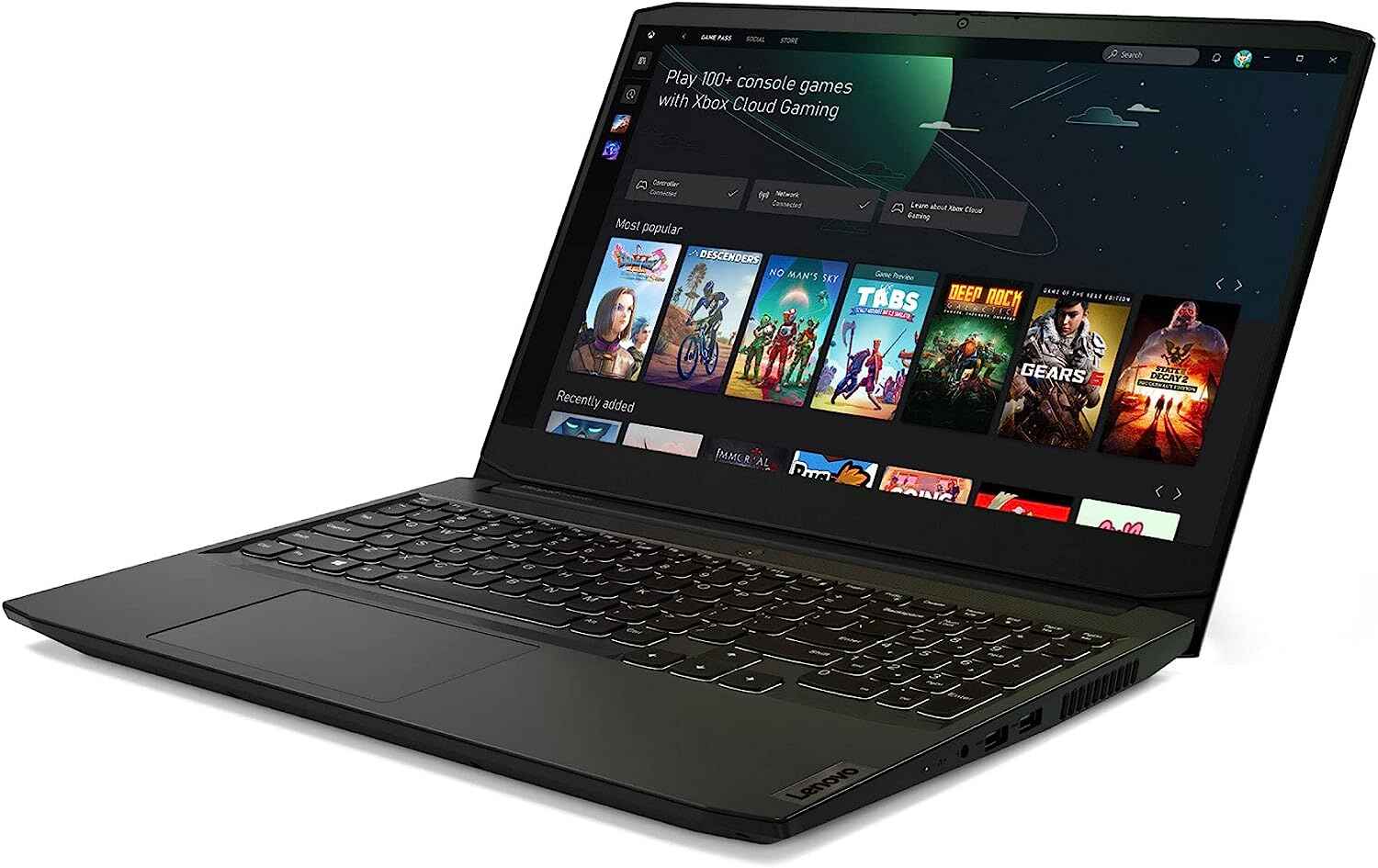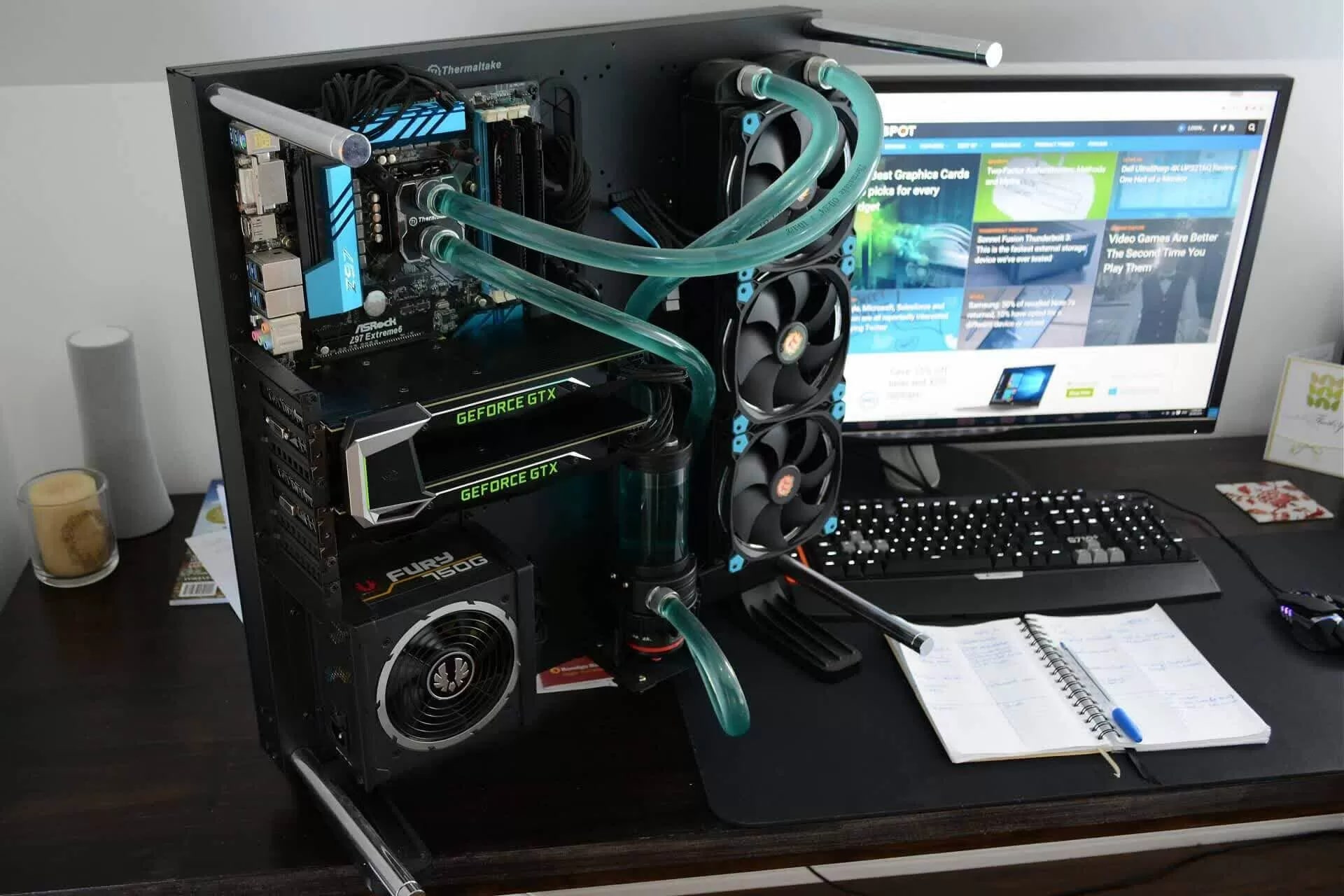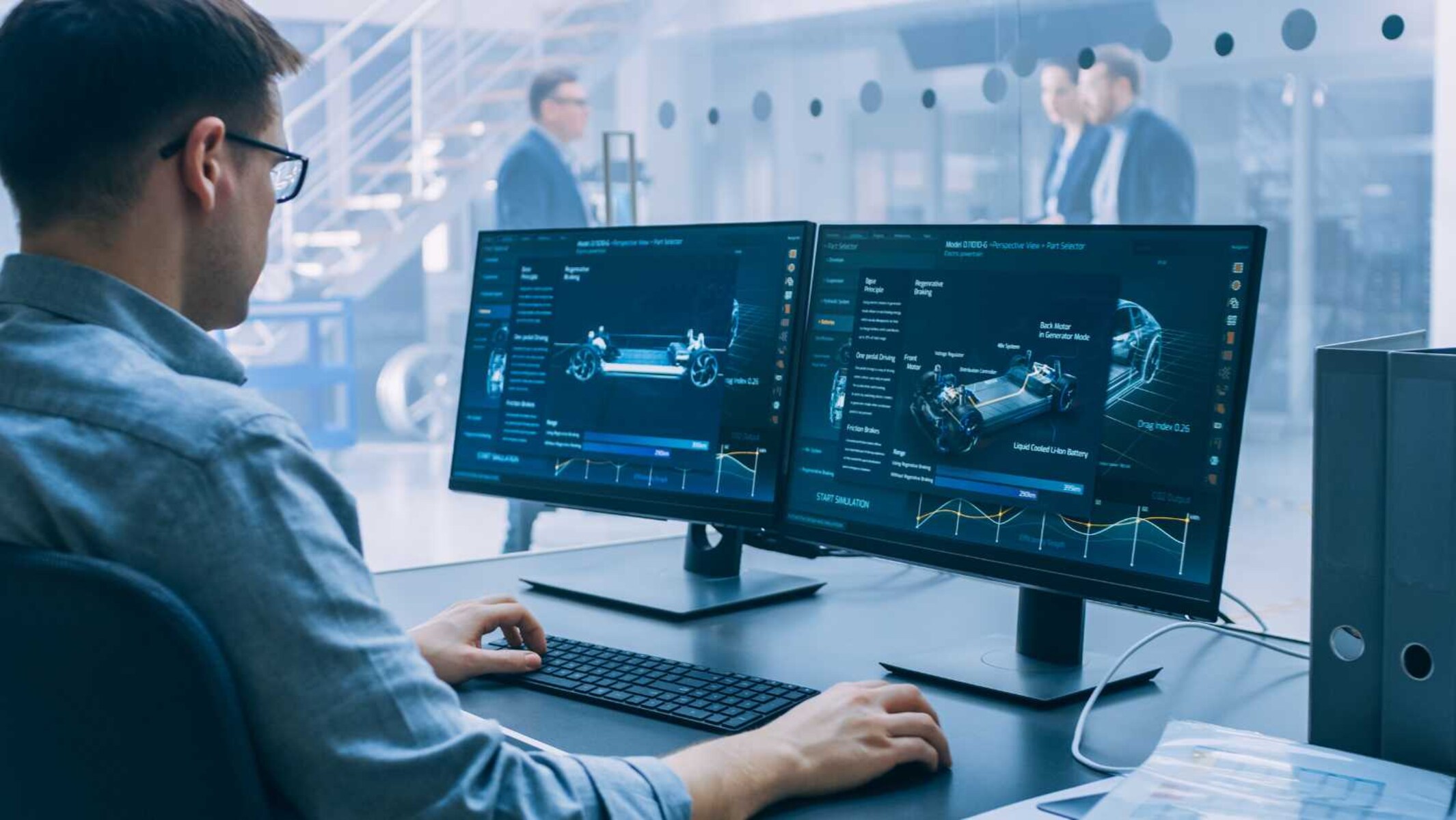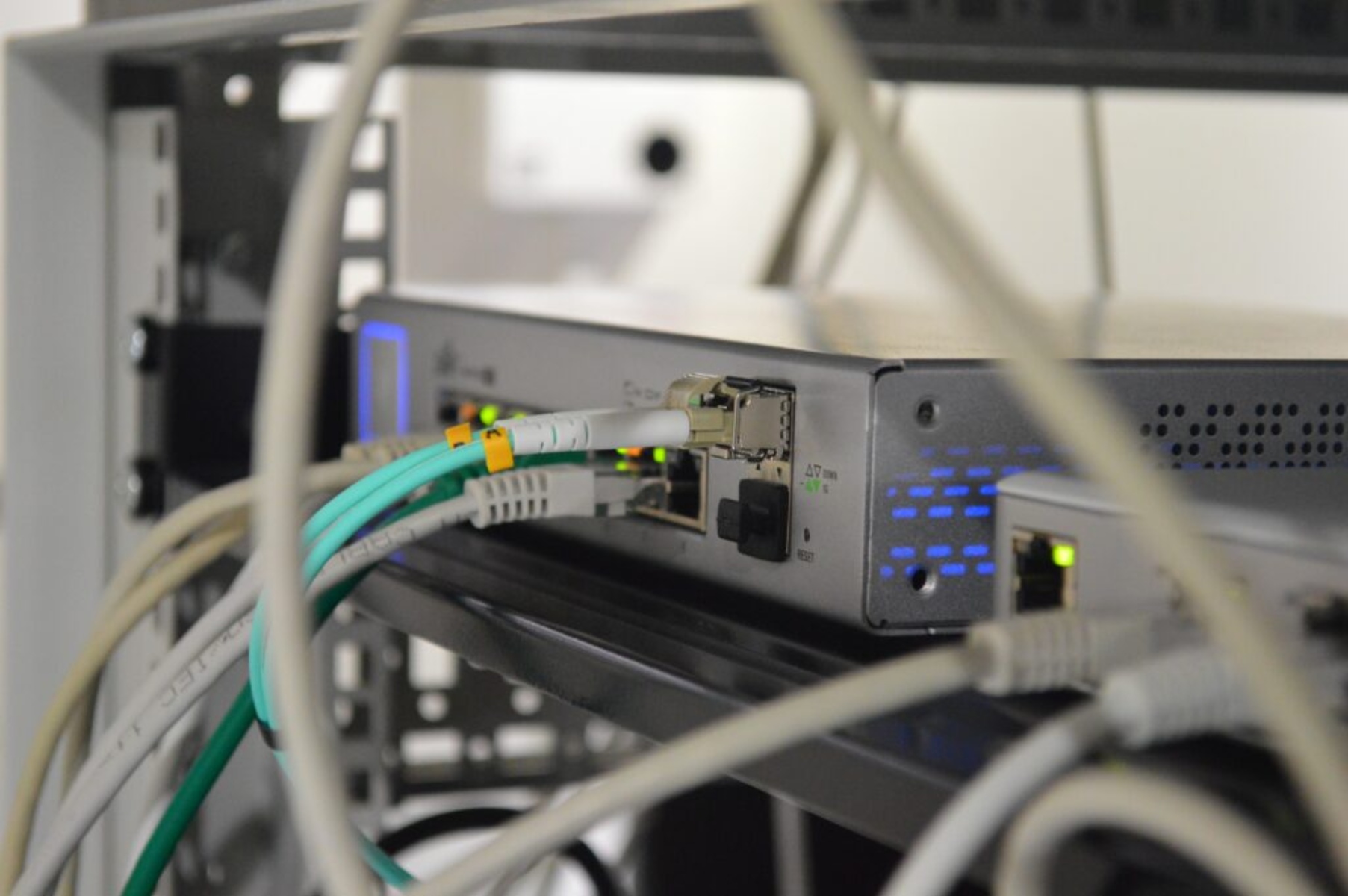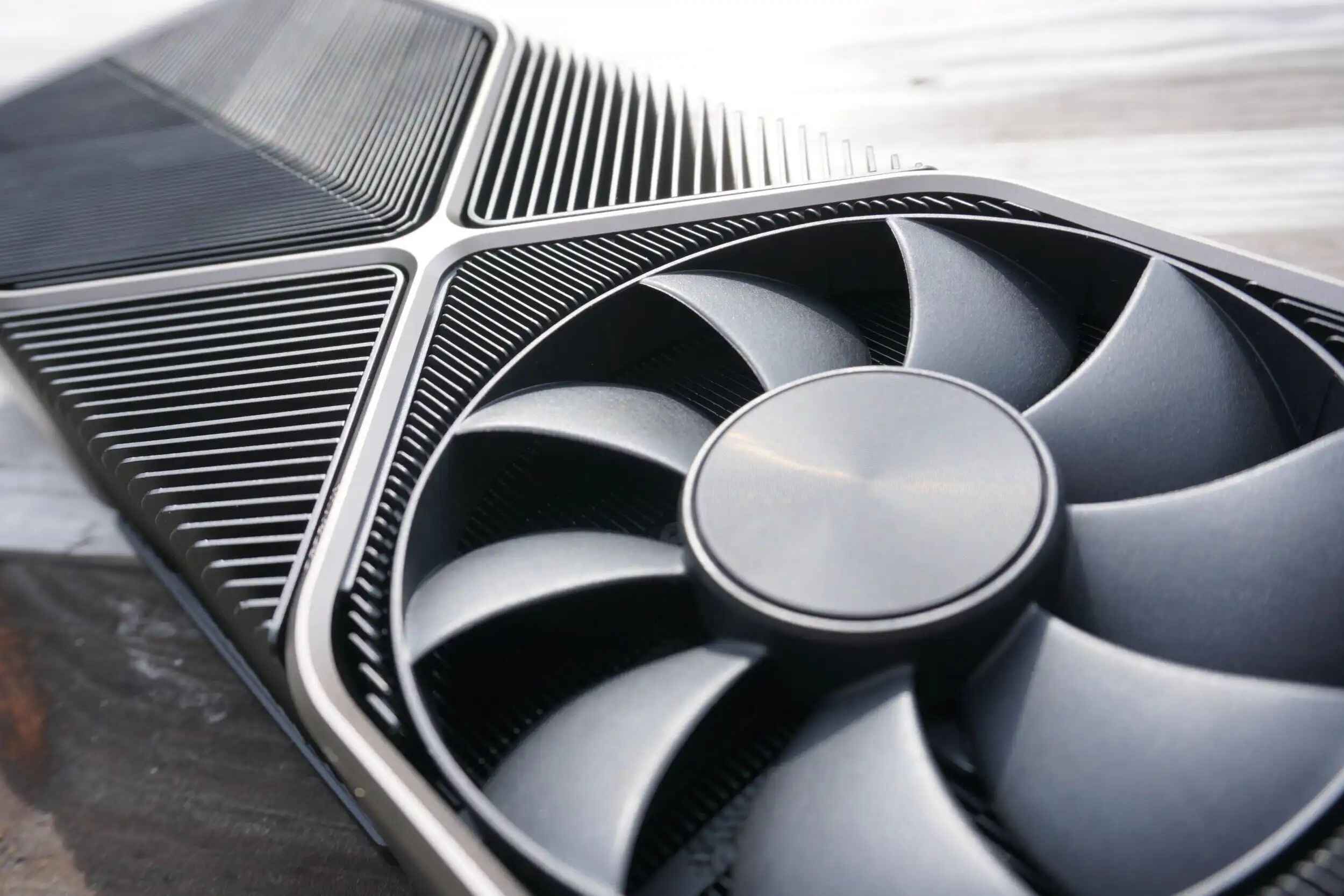Introduction
Welcome to this step-by-step guide on how to make an AMD graphics card the primary display adapter on your computer. The primary display adapter is responsible for rendering and displaying images, videos, and other visual content on your screen. By setting your AMD graphics card as the primary display adapter, you can optimize the performance of your computer and make the most out of your GPU.
Having an AMD graphics card as your primary display adapter allows you to take advantage of its advanced features and capabilities, such as improved graphics rendering, enhanced gaming experiences, and faster video encoding and decoding. Whether you’re a gamer, a video editor, or a graphic designer, making your AMD graphics card the primary display adapter will help you unlock its full potential and ensure a smoother and more enjoyable computing experience.
In this guide, we will walk you through the step-by-step process of making your AMD graphics card the primary display adapter. You don’t need to be a computer expert to follow these instructions, as they are beginner-friendly and straightforward. So let’s dive in and get started!
Step 1: Check if your computer has an AMD graphics card
Before proceeding with the process of making your AMD graphics card the primary display adapter, it is crucial to ensure that your computer is equipped with an AMD graphics card. This step will help you verify if your computer meets the necessary hardware requirements.
To check if your computer has an AMD graphics card, follow these steps:
- Open the “Device Manager” on your computer. You can access it by right-clicking on the “Start” button and selecting “Device Manager” from the menu.
- In the Device Manager window, look for the “Display adapters” category and expand it by clicking on the arrow next to it.
- If you see the name of an AMD graphics card listed under the “Display adapters” category, it means your computer has an AMD graphics card installed. You can proceed to the next step.
- If you do not see the name of an AMD graphics card, it means your computer does not have an AMD graphics card installed. In this case, you cannot make it the primary display adapter. However, you can consider upgrading your graphics card to an AMD one if desired.
Verifying the presence of an AMD graphics card is essential as the subsequent steps in this guide will specifically pertain to AMD graphics cards. If your computer does not have an AMD graphics card, you may need to consult the documentation or support for your specific graphics card to explore what options are available to you.
Step 2: Update the graphics card drivers
Before proceeding with the process of making your AMD graphics card the primary display adapter, it is crucial to ensure that you have the latest graphics card drivers installed on your computer. Updating the graphics card drivers not only enhances the performance and stability of your graphics card but also ensures compatibility with the latest software and games.
To update the graphics card drivers for your AMD graphics card, follow these steps:
- Head over to the official website of AMD (www.amd.com).
- Navigate to the “Support” or “Drivers & Support” section of the website.
- Select the appropriate options to identify your graphics card model and operating system.
- Once you have identified the correct drivers for your graphics card and operating system, download the latest version.
- Run the downloaded driver installation file and follow the on-screen instructions to update the drivers.
- After the installation process is complete, restart your computer to apply the changes.
Updating the graphics card drivers ensures that you have the latest bug fixes, performance enhancements, and feature updates provided by AMD. It is recommended to regularly check for driver updates and install them to keep your graphics card running smoothly.
Having the updated drivers for your AMD graphics card is essential as it can prevent compatibility issues and ensure optimal performance when configuring it as the primary display adapter. When drivers are outdated or incompatible, they may cause various display-related issues or prevent the successful configuration of your graphics card as the primary adapter.
Step 3: Access the graphics card settings
Once you have confirmed that your computer has an AMD graphics card and updated the drivers to their latest version, the next step is to access the graphics card settings. This will allow you to make changes to the display settings and configure your AMD graphics card as the primary display adapter.
To access the graphics card settings for your AMD graphics card, follow these steps:
- Right-click on your desktop to open the context menu.
- From the context menu, select “AMD Radeon Settings” or “AMD Catalyst Control Center,” depending on the version of AMD software installed on your computer.
- This will open the AMD control panel, where you can manage various settings and configurations for your graphics card.
The AMD control panel provides a user-friendly interface that allows you to access and modify different display-related settings. From here, you can adjust resolution, refresh rate, brightness, contrast, and other display properties. To proceed with making your AMD graphics card the primary display adapter, you need to navigate to the appropriate setting.
Please note that the steps to access the graphics card settings may vary slightly depending on the version of AMD software you have installed. If you are unable to find the specific options mentioned here, consult the documentation or support for your particular version of AMD software for guidance.
Now that you have successfully accessed the graphics card settings, you are ready to proceed to the next step and configure your AMD graphics card as the primary display adapter.
Step 4: Set the AMD graphics card as the primary display adapter
Now that you have accessed the graphics card settings, it’s time to configure your AMD graphics card as the primary display adapter. Setting your AMD graphics card as the primary display adapter ensures that it takes precedence over any other graphics cards installed on your computer.
To set your AMD graphics card as the primary display adapter, follow these steps:
- Navigate to the “Display” or “Display Settings” tab within the AMD control panel.
- Look for an option that mentions “Primary Display” or “GPU Preference”. The exact wording may vary depending on the version of AMD software you have installed.
- Select the option that allows you to choose the primary display adapter.
- From the available options, choose your AMD graphics card as the primary display adapter. This will assign the highest priority to your AMD graphics card over any other graphics cards on your computer.
By setting your AMD graphics card as the primary display adapter, you ensure that your computer utilizes the full capabilities of your AMD graphics card for rendering graphics, videos, and other visual content.
Once you have selected your AMD graphics card as the primary display adapter, you may need to save the changes and exit the graphics card settings to apply the new configuration.
Please note that the steps and options mentioned here are general guidelines, and the actual settings may vary depending on the version of AMD software you have installed. If you are unable to locate the specific options mentioned, consult the documentation or support for your particular version of AMD software for further assistance.
Now that you have successfully configured your AMD graphics card as the primary display adapter, you are one step closer to optimizing your computer’s performance and unleashing the true potential of your GPU.
Step 5: Save and exit the settings
After configuring your AMD graphics card as the primary display adapter, it is important to save the changes and exit the graphics card settings to ensure that the new configuration takes effect. Saving the settings will ensure that your computer recognizes and prioritizes the AMD graphics card as the primary display adapter.
To save and exit the settings, follow these steps:
- Locate the “Apply” or “Save” button within the graphics card settings.
- Click on the “Apply” or “Save” button to save the changes you have made.
- After saving the settings, look for an “Exit” or “Close” button to exit the graphics card settings.
- Click on the “Exit” or “Close” button to exit the graphics card settings.
It is important to note that some graphics card settings may require you to restart your computer for the changes to take effect. If you are prompted to restart your computer, be sure to save any unsaved work and follow the on-screen instructions to restart your computer.
By saving and exiting the graphics card settings, you ensure that the changes you made to set your AMD graphics card as the primary display adapter are applied and active. Your computer will now prioritize and utilize the AMD graphics card for rendering and displaying visual content.
Once you have saved and exited the graphics card settings, you are ready to move on to the next step and test the changes you have made to ensure that your AMD graphics card is functioning as the primary display adapter.
Step 6: Test the changes and troubleshoot if necessary
After setting your AMD graphics card as the primary display adapter and saving the settings, it is crucial to test the changes and ensure that your computer is utilizing the AMD graphics card as intended. Testing the changes will allow you to verify if the AMD graphics card is now functioning as the primary display adapter and if there are any issues that need troubleshooting.
To test the changes and troubleshoot if necessary, follow these steps:
- Restart your computer to ensure that the changes are applied and take effect.
- Once your computer has restarted, observe the display output to see if it is connected to the AMD graphics card.
- If your screen displays the appropriate resolution, graphics quality, and performance, it indicates that your AMD graphics card is functioning as the primary display adapter.
- If you encounter any issues, such as a blank screen, distorted graphics, or performance problems, there may be some troubleshooting steps you can take:
– Verify that the AMD drivers are installed correctly and up to date
– Check the physical connections between your computer and the display monitor
– Adjust the display settings within the AMD control panel for optimal performance
– Consult the documentation or support for your AMD graphics card for specific troubleshooting steps
If you are unable to troubleshoot and resolve the issues yourself, it may be necessary to seek assistance from a computer technician or contact the customer support for your AMD graphics card.
Testing the changes and troubleshooting any issues will ensure that you have successfully configured your AMD graphics card as the primary display adapter and that it is functioning as intended. By resolving any issues that arise, you can optimize the performance and output of your computer’s graphics card.
Now that you have tested the changes and addressed any issues, you can enjoy using your computer with the AMD graphics card functioning as the primary display adapter, taking full advantage of its capabilities and enhancing your visual experience.
Conclusion
Congratulations! You have successfully learned how to make an AMD graphics card the primary display adapter on your computer. By following the steps outlined in this guide, you have configured your AMD graphics card to take precedence over other graphics cards, allowing you to maximize its performance and enjoy enhanced graphics rendering, gaming experiences, and video processing capabilities.
Throughout this guide, you checked if your computer has an AMD graphics card, updated the graphics card drivers, accessed the graphics card settings, set the AMD graphics card as the primary display adapter, saved and exited the settings, and tested the changes while troubleshooting any issues that arose along the way.
Setting your AMD graphics card as the primary display adapter is beneficial for various tasks, including gaming, video editing, graphic design, and other visually demanding activities. It ensures that your computer utilizes the full potential of your AMD graphics card, resulting in improved performance, enhanced visual quality, and a smoother computing experience.
Remember to regularly update your graphics card drivers to stay up to date with the latest improvements and feature enhancements released by AMD. Additionally, troubleshooting any issues that may arise helps ensure that your computer functions optimally with the newly configured primary display adapter.
Now that you have accomplished the task, enjoy the benefits of your AMD graphics card being the primary display adapter. Whether you are a gamer, content creator, or simply a computer enthusiast, this configuration will enhance your computing experience and allow you to make the most out of your AMD graphics card’s capabilities.
Feel free to refer back to this guide whenever you need to refresh your memory or help others with the process. With your AMD graphics card as the primary display adapter, you can take your computer’s visuals to the next level!







